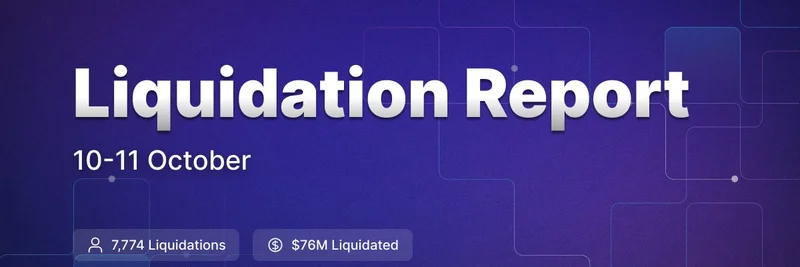In the wild world of crypto, where prices can swing like a pendulum on steroids, platforms like Drift Protocol are stepping up to keep traders safe. If you're into meme tokens on Solana, you know how brutal these dips can be—especially when leveraged positions get wiped out in seconds. Recently, Drift shared some eye-opening insights on how their system handled one of the sharpest market drawdowns we've seen lately, and it's worth diving into for anyone trading DeFi.
The Big Flush: What Happened?
Over the past 24 hours leading up to October 11, 2025, crypto markets took a nosedive, flushing out over $20 billion in positions across the ecosystem. For Drift, a capital-efficient DeFi platform on Solana, this meant processing a whopping $76 million in liquidations across perpetual and spot markets. Liquidations, for the uninitiated, happen when a trader's position loses too much value and gets automatically closed to prevent further losses—think of it as the system's way of saying, "Time's up!"
But here's where Drift stands out: amid all that chaos, they only incurred about $18,000 in socialized losses—that's a tiny 0.02% of the total liquidated. Socialized losses are when the platform spreads out any unrecoverable debts among users or funds, so keeping this low means most folks didn't feel the pinch. Plus, Drift maintained zero downtime, ensuring trading continued smoothly.
How Drift Protected Users
At the peak of the volatility, 4,608 users on Drift were teetering on the edge of liquidation. Thanks to smart features like flash-crash protection and oracle guardrails, half of them—2,303 users—were spared. Oracles are basically price feeds that tell the system what assets are worth, and guardrails prevent bad data from triggering unfair wipes.
Drift's approach is all about balance. Their liquidation engine is fast enough to protect the protocol but fair enough to give traders a fighting chance to recover. For instance, if a price deviates sharply from a short-term time-weighted average price (TWAP—a smoothed-out average to avoid spikes), the liquidation window slows down. Even a few extra seconds can make the difference between a total loss and a rebound.
This is crucial for meme token enthusiasts, as Solana's fast-paced ecosystem often sees wild swings in tokens like dog-themed coins or viral projects. Trading perps (perpetual futures) on these can amplify gains but also risks, so having a platform that doesn't nuke your account on a single bad tick is a game-changer.
Earnings for Insurance Fund Depositors
It's not all about defense—there's upside too. Depositors in Drift's Insurance Fund (IF) pocketed $600,000 from the liquidation fees during this event. The IF acts as a backstop for the protocol, covering any shortfalls, and in return, depositors earn yields from underwriting that risk. It's a win-win: stronger protocol stability and passive income for participants.
Community Reactions and Ongoing Improvements
The thread on X (formerly Twitter) sparked positive vibes from the community. Users praised the reliability, with one noting how it builds long-term trust. Others inquired about specific features like auto-deleveraging on shorts, showing the hunger for transparent risk tools. Drift's team is already poring over the data to refine things further, aiming to make DeFi even more resilient.
If you're trading meme tokens or any assets on Solana, events like this highlight why choosing a robust platform matters. Drift's performance here isn't just a pat on the back—it's a blueprint for how DeFi can evolve to protect users without sacrificing speed or efficiency. Stay tuned as the team rolls out more updates, and remember, in crypto, knowledge is your best hedge.



